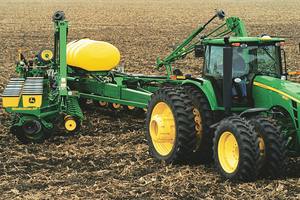As spring rains arrive across much of the country, the University of Nebraska is encouraging producers to stay off of their fields immediately after wet weather.
Moist soil can be easily compacted while tilling or under the weight of tires. Sidewall compaction can quickly become a problem during the production process.
“Even with no-till, waiting a day or two for the soil to dry out some will provide better soil conditions for stand establishment,” University of Nebraska extension engineer Paul Jasa explains. “Mudding the crop in often results in some seed-vee smearing, sidewall compaction, and/or over packing of the seed.”
Producers can determine if their soil is too wet by dropping a mud ball to the ground from waist high. If the ball does not break apart when it hits the soil surface, the ground is likely too wet.
“Mudding” the crop can result in uneven emergence, and it may even reduce yields over time. Jasa goes on to state that even after waiting for the soil to dry, there will still be time to plant crops without facing penalties for late planting. This is especially true in the case of soybeans and grain sorghum.
In the event that a crust forms on the surface of soil after the rain, producers should avoid tilling the field to break it up. The ground may still be too wet for tillage.
“Producers will be better off to simply plant the crop through the crust,” Jasa says. “The seedlings will come up through the slot that the planter cut into the soil when placing the seeds.”
